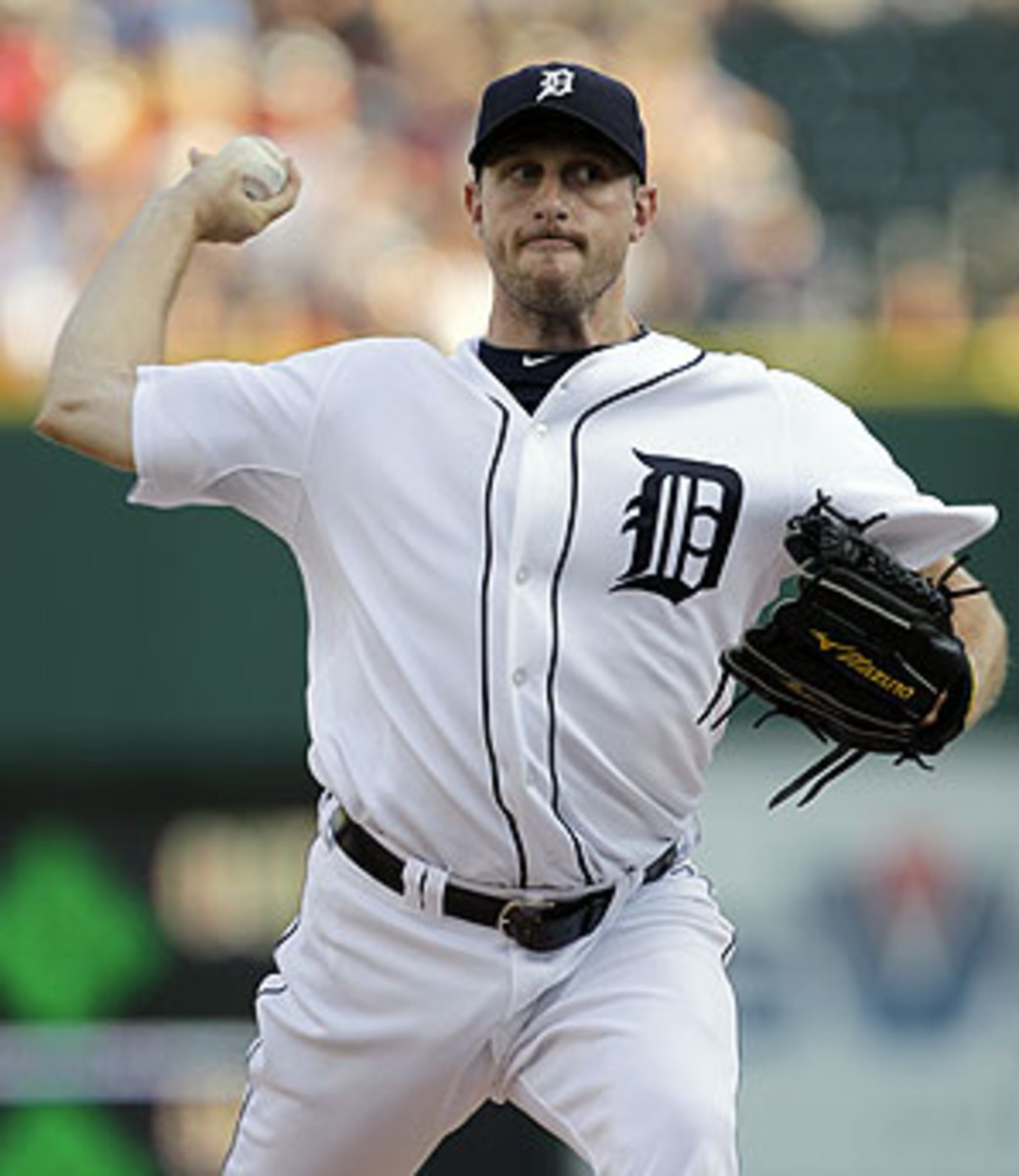High pitch counts no longer inspire fear in the hearts of mangers, GMs
On Wednesday, Max Scherzer, 25, of the Tigers threw 123 pitches and Chad Billingsley, 25, of the Dodgers threw 125 pitches. The next day, Josh Johnson, 26, of the Marlins threw 121 pitches and Justin Verlander, 27, of the Tigers threw 120 pitches. Nobody seemed to get too worked up about it.
There was a time -- OK, it was in the wake of Mark Prior and Kerry Wood breaking down -- when such high pitch counts for young pitchers would have set off deputized pitch-count mobs reaching for their torches and pitchforks. But something very interesting is going on during this pitching renaissance: managers are letting their pitchers ring up high pitch counts more often.
From 2001 through 2008, the number of 120-pitch outings declined every season. But last year there was a 26-percent uptick, which has been followed by another increase this year of nearly 30 percent, based on the current rates.
Here are the number of starts in which a pitcher threw 120 pitches, beginning with 2003, the year Wood and Prior carried the Cubs to within one game of the World Series, only to be hurt the next season:
2003: 2262004: 1862005: 1352006: 1202007: 812008: 732009: 922010: 119*
* projected
What's going on? Managers, general managers and the media no longer are running so scared. The environment has calmed. There have been fewer high-profile breakdowns, at least anecdotally. Hall of Famer Nolan Ryan, president of the Texas Rangers, has provided a strong, respected voice arguing that the Conservation Movement (fewer pitches equals fewer problems) went too far.
Perhaps most of all, this cycle of young starting pitchers has been good enough to help change the culture. Of the 70 starts this year of 120 pitches, 52 have been thrown by pitchers in their 20s. That's already more than pitchers in their 20s threw just three years ago -- and we still have more than two months left in the season.
There is another trend that becomes obvious when you look at high-pitch count games over the past decade: the pitching dinosaurs are extinct. Remember when old dudes such as Roger Clemens, Mike Mussina, Randy Johnson, Tom Glavine, John Smoltz, Curt Schilling and even Woody Williams roamed major league mounds? Those pitchers have vanished so quickly you would think an asteroid struck the game.
In 2004, there were 24 games in which somebody at least 36 years old threw 120 or more. Just four years later? Zip. And this year? Zip, again.
In fact, there have been only two high-pitch-count games thrown by such old pitchers in the past three years combined (by Pedro Martinez and Brian Moehler, both in 2009).
Take a look at the path to extinction for 120-pitch games by guys 36-and-older:
2004: 242005: 142006: 112007: 52008: 02009: 22010: 0
The old masters, a group that also included Greg Maddux (who went the last eight years of his career without throwing 120 pitches in a game), are gone. The generation of starting pitchers right behind them was weak. But this new generation is so deep that it's helping to change how the game is played. There is no doubt that baseball today is a young man's game.
The Phillies fired their hitting coach, Milt Thompson, 95 games after they won back-to-back pennants, including a world championship. With that move Philadelphia confirmed that it is a franchise consumed by expectations of making the playoffs every year, one willing to throw men overboard to keep the sellouts coming, the TV ratings high and the playoff streak intact.
Did Thompson suddenly become a poor hitting coach? No, but in another market he might have survived the dip in offensive production. The team's OBP is the worst that it's been since 1997 and its slugging percentage is its worst since 2000.
What cost Thompson his job, in addition to the expectations, were injuries and a poor roster. Injuries to Jimmy Rollins, Placido Polanco and Chase Utley have been particularly harmful, and Philadelphia doesn't have enough good players on the bench to ride out lengthy absences. Manager Charlie Manuel has given 531 at-bats to Wilson Valdez, Juan Castro, Greg Dobbs and Ben Francisco, all of whom have an OBP no better than .288 and have combined to hit .220.
Philadelphia bet on too many older players when the game is skewing younger. Raul Ibanez, Polanco, Brian Schneider, Castro, and Ross Gload are all 33 or older, and the Phillies have the oldest group of positional players in baseball. They have two hits total this year by 25-and-under players.
Finally, the decision not to keep pitcher Cliff Lee at $9 million is harming Philadelphia more than anything, especially when the return looks so poor after hastily trading him to Seattle last winter. Pitcher Phillippe Aumont was demoted to A ball after posting a 7.43 ERA in Double-A, pitcher J.C. Ramirez has a 4.80 ERA in Double-A and outfielder Tyson Gillies is hitting .238 in Double-A while playing in only 26 games.






